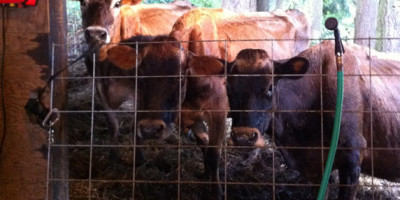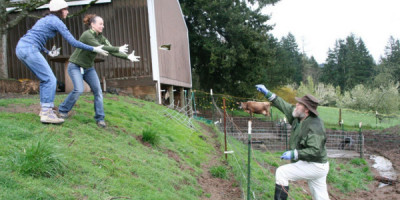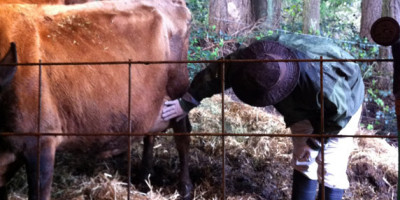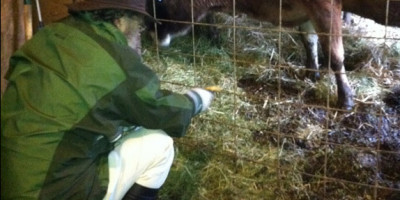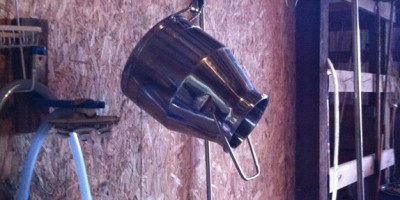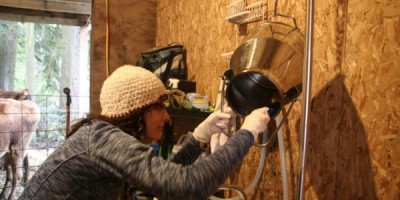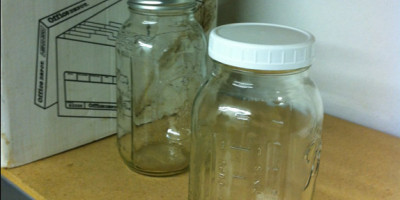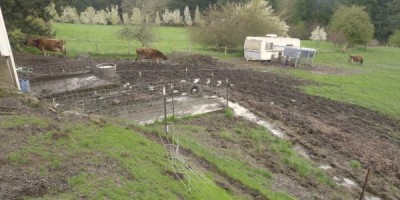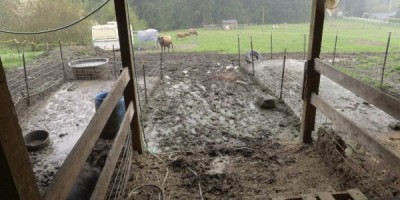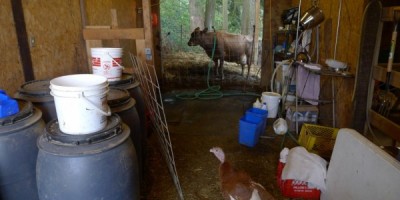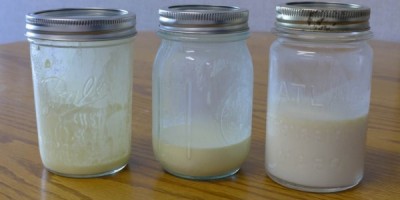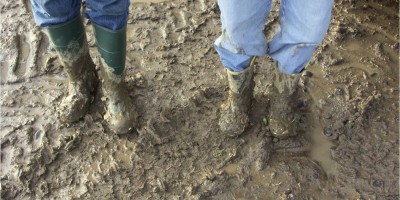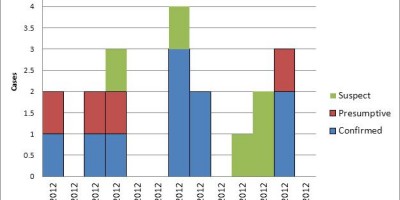| Outbreak: Foundation Farm Raw Milk |
|---|
| Product: Foundation Farm Raw Milk |
| Investigation Start Date: 04/10/2012 |
| Location: Clackamas, Mult., Wash. Counties, OR |
| Etiology: E. coli (STEC) O157:H7 |
| Earliest known case onset date: 04/01/2012 |
| Latest case onset date: 04/14/2012 |
| Confirmed / Presumptive Case Counts: 11 / 5 |
| Positive Samples (Food / Environmental): 2 / 13 |
| Hospitalizations: 4 |
| Deaths: 0 |
| Outbreak Summary: |
|---|
| This outbreak highlighted the persistent hazard of raw milk consumption, already well documented in the medical literature. Four persons were hospitalized — some critically ill and all with hemolytic-uremic syndrome, subsequently shown to have been caused by E. coli O157:H7. Although most sales of raw milk are illegal in Oregon, the farm implicated here is an example of one method by which those determined to get the product can skirt the law: instead of “purchasing milk,” families bought “shares” in Foundation Farm cows, their dividends being the milk produced by them and then consumed without pasteurization. The cause of the outbreak wasn’t long a mystery: Oregon public health nurses routinely interview each O157 case and ask about “usual suspect” exposures — one of which is whether the case consumed unpasteurized milk. A single case having a high-risk exposure like this one is sufficient to raise suspicion and to warrant further investigation. As the investigation progressed, it transpired that the families that participated in this “cow-share” arrangement had been aware of many illnesses and communicating about them; and the dairy farmer had already advised the shareholders not to drink the milk. The farm ceased production, and several parents publicly advised the unwary not to serve unpurified milk to their children. |
| Details: |
|---|
| On April 10, 2012, Multnomah CHD was notified by a clinician about a 1 year-old child with HUS (culture pending; later shown to be O157:H7). The child attended a day-care center in Washington County and had a history of regular raw milk consumption, both of which indicated a need for public health follow-up. Washington CHD investigated the child care setting and found nothing to suggest any other illness of significance there. Meanwhile, it was agreed that ACDP would contact ODA and discuss what we could do about the herd share operation that was reportedly the source of the raw milk. It was determined that this was operation (dba Foundation Farm) was ostensibly legal with 4 cows (3 in production) that was unlicensed, unregulated by, and unknown to ODA. (Dairies of this type are not required to be licensed or regulated.) The Oregon Department of Agriculture contacted the farm owner to request a list of all customers of the farm; all needed to be contacted to look for potential illness. On the morning of the 11th Mr Salyers sent ODA a spreadsheet listing the 48 household contacts for his customers, and gave ODA oral authorization to visit the premises and collect any specimens we wanted from the working part of the farm (but not the residence building). He also reported to ODA that, following his attempts to contact his customers through Facebook, he had learned of “several” additional illnesses. (He already knew about the index case). He also reported that he had voluntarily stopped distribution of milk (which turned into a permanent closure) and had recommended to his customers that they discard any available product. On the afternoon of the 11th, while local and state health department staff attempted case finding among herd share households, a group from ACDP (Keene, Tourdjman, Buser, Poissant) met Jim Postlewait from ODA at the farm in Wilsonville. There were no family members apparent on the premises while we were there; Mr Salyers had told us that he would be away and he had asked us not to bother people in the house. We collected a convenience sample of 63 samples including rectal swabs on all 4 animals, surfaces in and around the milking parlor, and fecal pat samples from adjacent pastures. No milk was available at the farm for testing. Over the subsequent days, we attempted to interview all households on the list using a standardized questionnaire that covered history of Foundation Farm milk consumption, several other possible food exposures, and diarrheal illness in household members. A press release was issued to warn the public about the risk and to stimulate reporting; one of the earliest identified cases was from a household that was not on the customer list. That child had consumed the milk while visiting a family friend. Leftover raw milk samples were collected on April 12 and 13 from two shareholder households for testing. Results: Eventually we identified 11 lab-confirmed cases—including 1 Washington state resident who consumed milk when visiting family in Oregon—and 5 presumptive cases. Four other household members reported very mild concurrent diarrheal symptoms and were not counted as cases. Four cases were hospitalized—all with HUS. Three cases were hospitalized for >25 days—one of them for ~60 days. We were able to successfully interview 30 (62%) of 48 herd-share households, comprising 91 individuals. Numerous attempts were made to interview members of the other 18 households to no avail; some were contacted but refused to cooperate with the investigation. All 15 cases reported consumption of FF milk on one or usually multiple occasions. No other suggestive common exposures were identified. The farm setup was described by ODA as fairly typical for a family farm. The layout was very poorly designed from a food safety perspective. The premises appeared to be dirty and difficult to maintain in a hygienic manner for food production. There were no facilities to rapidly chill milk. Although we did not see it (because it was in the garage of the home), milk bottles were allegedly stored in an ordinary (non-commercial) refrigerator. Thirteen (21%) of 63 samples collected at Foundation Farm were positive for E. coli O157:H7, including 10 samples of animal manure; 2 cattle rectal swabs; and 1 swab of fencing at the milking station. One of two milk samples collected from customer households was also positive. All but one O157 cultures from cases, milk, and the farm were indistinguishable by 2-enzyme pulsed-field gel electrophoresis (PFGE); one case appeared to have an extra band on XbaI. Conclusions: The outbreak was caused by consumption of contaminated raw milk. Efforts should be continued to warn consumers about the risks of raw milk consumption, which can result in horrific illness and death. |
